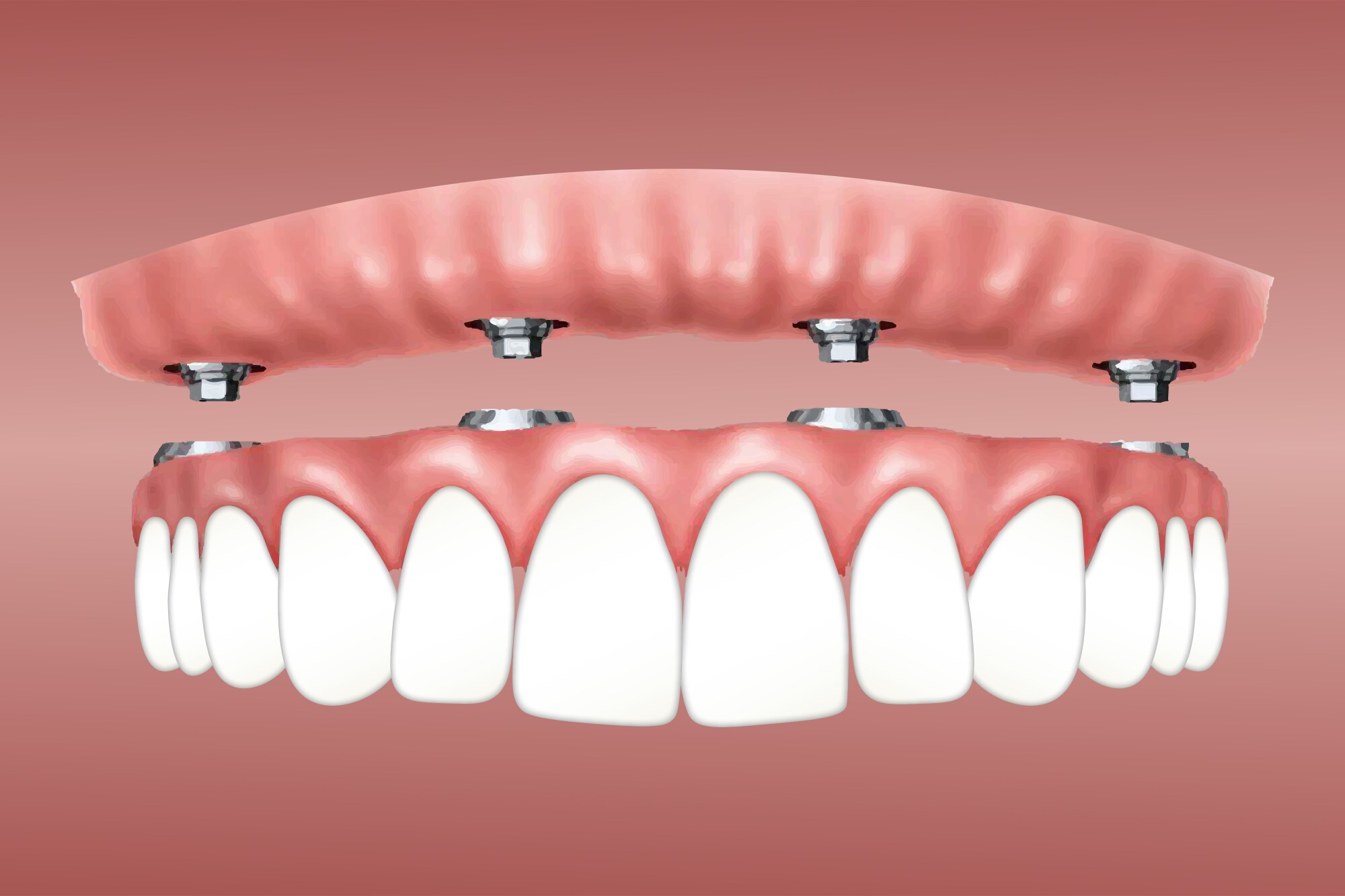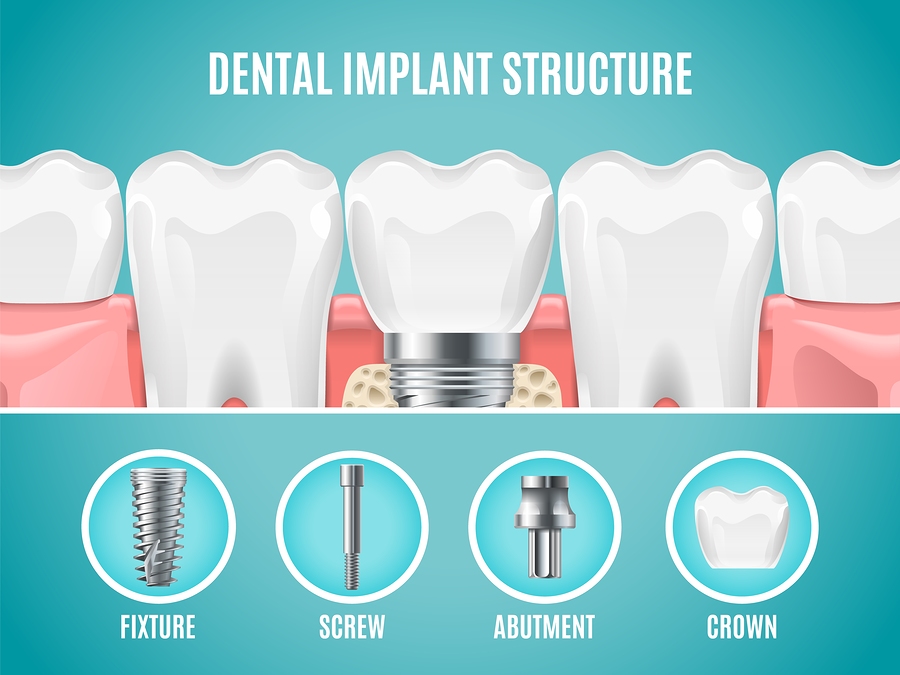The smart Trick of Dental Sense That Nobody is Discussing
Table of ContentsThe 7-Second Trick For Dental SenseThe Ultimate Guide To Dental SenseDental Sense Can Be Fun For AnyoneFacts About Dental Sense Uncovered
are medical devices operatively implanted right into the jaw to restore a person's capability to eat or their look. They supply assistance for synthetic (phony) teeth, such as crowns, bridges, or dentures. When a tooth is shed due to injury or disease, a person can experience difficulties such as quick bone loss, malfunctioning speech, or changes to eating patterns that result in discomfort.Dental implant systems are composed of a dental implant body and dental implant joint and might additionally consist of a joint fixation screw. Cosmetic dentistry services. The dental implant body is operatively inserted in the jawbone instead of the tooth's origin. The oral implant abutment is normally affixed to the dental implant body by the abutment fixation screw and expands through gum tissues right into the mouth to support the connected fabricated teeth
(https://hearthis.at/matthew-music/set/dental-sense/)Framework of The Oral Implant System picking dental implants, talk to your dental provider about the potential benefits and risks, and whether you are a prospect for the treatment. Points to take into consideration: Your overall wellness is a vital variable in figuring out whether you are a great candidate for oral implants, for how long it will certainly require to heal, and the length of time the implant may remain in place.
Cigarette smoking might impact the recovery process and decrease the long-term success of the implant. The recovery procedure for the dental implant body might take several months or longer, throughout which time you usually have a short-lived joint instead of the tooth. the dental implant treatment: Meticulously comply with the oral hygiene instructions provided to you by your dental service provider.
Unknown Facts About Dental Sense
Implant failing can result in the requirement for one more procedure to repair or replace the implant system. Recovers the capability to chew Recovers aesthetic appearance Helps keep the jawbone from diminishing because of bone loss Maintains the wellness of the surrounding bone and gums Aids keep surrounding (nearby) teeth stable Improves lifestyle Damages to bordering all-natural teeth during dental implant placement Injury to the surrounding cells throughout surgical treatment, such as sinus perforation Injury during surgical treatment (as an example, crack of surrounding jawbone) Poor function, such as feeling like the teeth do not attack with each other usually A feeling that the tooth hangs or twisting in position arising from an abutment screw loosening Implant body failure (looseness of the dental implant body) due to systemic infection, which may be extra most likely in patients with uncontrolled diabetes mellitus as a result of local infection in bone and gum tissues supporting the implant body as a result of postponed recovery, which may be more likely in individuals that smoke Problem cleansing the gum tissues around the implant, resulting in poor oral hygiene Untreated periodontal condition Post-surgical feeling numb as a result of nerve impingement or damage Always alert healthcare providers and imaging professionals that you have oral implants before any magnetic vibration imaging (MRI) or x-ray treatments.
FDA is not knowledgeable about any type of adverse events reported for MRI or x-ray procedures with oral implants. Dental implants systems are typically constructed from products that follow worldwide agreement criteria of the International Company for Standardization (ISO) or ASTM International. These standards have information of what makes a risk-free product.

A dental implant is a structure that changes a missing tooth. With screw-like gadgets, the cosmetic surgeon inserts an implant into the jawbone, and it acts as an anchor for an artificial tooth, called a crown.
The Definitive Guide to Dental Sense
Some people are not qualified for dental implant surgery. It is for dental specialists to operate people with: intense illnessuncontrollable metabolic diseasebone or soft cells illness or infectionIf these issues are settled, a person can have the surgical treatment. In, dental specialists avoid running on individuals with: If individuals with any of the above undergo oral implant surgery, there is a greater danger of the dental implant failing.

Oral implant surgical treatment is a customized process. It's not the very same for everyone. The adhering to offers a general summary of what you can expect your dentist, oral doctor, periodontist or prosthodontist to do: Place the implant operatively. Provide you time to recover. Affix Dental veneers cost the article and last crown, bridge or denture.
Next off, your surgeon will very carefully place the dental implant right into your jaw. Your surgeon will rearrange your gums and shut the cut with stitches. If your dental implant is near the front of your mouth, your dental expert will certainly make a momentary tooth for you to put on until you heal. This way, you will not have a space in your smile while you recoup.
8 Easy Facts About Dental Sense Explained
Your copyright can inform you what to anticipate in your circumstance. During the healing stage, your jawbone must fuse to the dental implant. This process, called osseointegration, is essential for security and long-lasting success. This process can take anywhere from three to nine months. Sometimes, it may take much longer.
As soon as your dental implant heals, your dentist can connect the abutment (tiny connector post) and your last remediation (crown, bridge or denture). This normally takes about one hour to complete and might need a second small surgery. You should not feel any pain throughout your oral implant treatment because your company will certainly utilize medication to numb your gums.